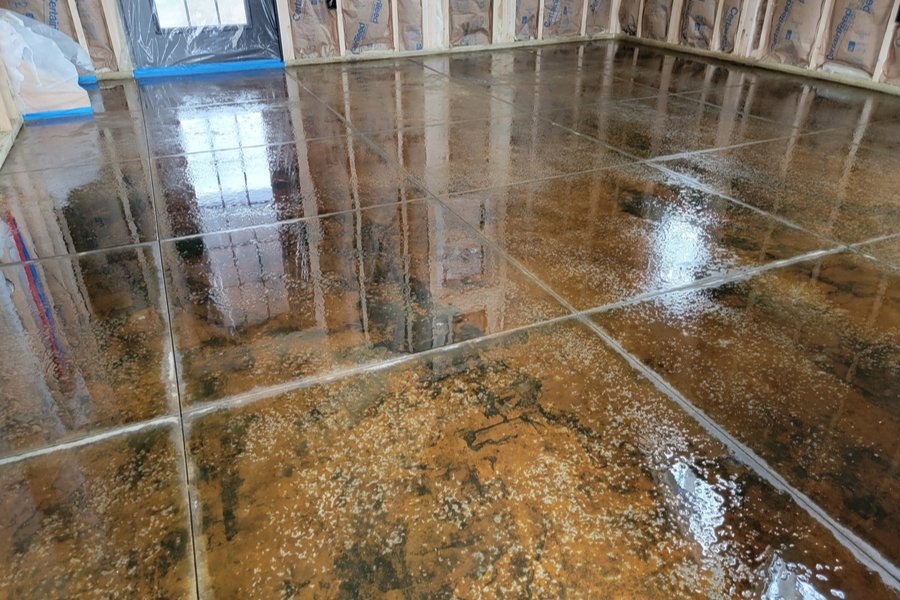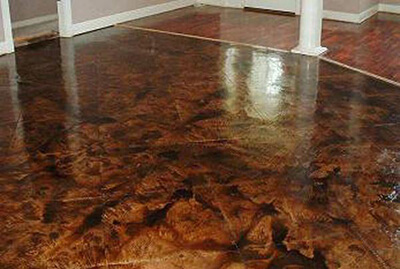Why Local Tarnished Flooring Is the Perfect Selection for Sustainable Home Enhancement
In the world of lasting home improvement, neighborhood tarnished flooring has become a popular choice among eco aware house owners. The unique blend of aesthetic charm, sturdiness, and ecological benefits it provides can not be neglected. By utilizing locally sourced timber, it cultivates a favorable ecological impact, and the staining procedure boosts resilience while decreasing dangerous chemical usage. As an economical financial investment with minimized maintenance demands, it raises a thought-provoking question: could this be the excellent remedy for lasting real estate?
Comprehending the Principle of Regional Stained Floor Covering
While the concept might appear novel to some, neighborhood tarnished flooring is an ingenious technique to home enhancement that incorporates looks, toughness, and sustainability. The term refers to the use of in your area sourced timber that is discolored to accomplish a distinct aesthetic charm. The discoloration procedure not only boosts the all-natural beauty of the timber grain yet additionally includes a layer of defense, increasing the durability of the flooring. This technique is thought about sustainable as it decreases the need for transportation of basic materials from distant areas, thus minimizing carbon impacts. Using regional wood varieties usually supports local economic situations and promotes liable woodland monitoring practices. This idea, for that reason, offers home owners an ecologically accountable selection without compromising visual allure or toughness.
The Appearance of Neighborhood Tainted Floor Covering
Why is neighborhood tarnished floor covering gaining appeal for its appearances? The answer hinges on the special beauty and character it gives any kind of area. Neighborhood discolored flooring uses a varied series of shades and patterns, showing the natural appeal and variations of the local timber varieties utilized. This creates an one-of-a-kind, tailored visual that can not be reproduced by mass-produced options. Additionally, the discoloration procedure improves the wood's natural grain and appearance, including depth and richness to the floor's look. This rustic sophistication seamlessly mixes with various interior decoration styles, from traditional to contemporary, making it a functional choice for house owners. Ultimately, the allure of regional tarnished flooring depends on its capacity to change homes into unique, aesthetically appealing rooms while advertising sustainability.
Ecological Effects of Regional Stained Flooring
The ecological ramifications of regional tarnished flooring include 2 significant variables: minimizing carbon footprint and waste minimization advantages. Utilizing in your area sourced materials for staining not only lessens transportation emissions, however also promotes sustainable forestry methods. The waste reduction element comes into play as these flooring kinds usually have a longer lifespan, lowering the frequent requirement for substitutes and the waste connected with it.
Minimizing Carbon Footprint
As homeowners transform to more sustainable options, regional stained floor covering arises as a feasible option to minimize carbon footprint. The procedure of tarnishing the flooring, instead than making use of synthetic finishes, involves fewer chemicals and less energy-intensive procedures. Choosing for regional tarnished floor covering shows a reliable procedure in advertising environmental sustainability, highlighting a concrete way homeowners can add to combating climate adjustment from the convenience of their very own homes. Local Stained Concrete.
Waste Reduction Benefits
Although often neglected, waste reduction is another considerable advantage of regional discolored floor covering. Furthermore, the discoloration process makes use of fewer sources and generates much less waste compared to making brand-new flooring materials. The option of neighborhood stained flooring not only improves homes however additionally underpins a commitment to lasting living and waste reduction.
The Resilience and Upkeep of Regional Stained Floor Covering

The Cost-Effectiveness of Local Discolored Flooring
While neighborhood stained floor covering may originally appear more costly than other choices such as rug or laminate, its longevity and durability swiftly turn it into a cost-efficient choice. For property owners seeking a sustainable, cost-effective remedy for their floor covering requires, local discolored floor covering arises as a premium, lasting financial investment that pays off over time.

Reality Examples of Sustainable Residences With Neighborhood Discolored Flooring
In the realm of sustainable home renovation, regional stained flooring has actually emerged as a prominent alternative. To recommended you read even more highlight its advantages, a number of actual life instances of environment-friendly homes that have actually successfully integrated this flooring method will certainly be highlighted. These case research studies provide tangible proof of the benefits and impact of making use of neighborhood stained flooring in sustainable homes.

Showcase: Eco-Friendly Flooring Homes
Scanning the world, one can discover many homes that embody the principle of environmentally friendly living via the use of regional stained flooring. Across seas in copyright, a modern house showcases its abundant, maple-stained flooring, a testament to the bountiful local wood supply (Residential Stained Concrete Floors). These homes not just i thought about this showcase the aesthetic adaptability of neighborhood stained floor covering but likewise its payment to an extra lasting way of living.
Local Tarnished Flooring Benefits
The indisputable appeal of neighborhood discolored floor covering expands past its visual charm, as it likewise provides considerable benefits to both property owners and the atmosphere. This type of flooring is sourced and produced in your area, decreasing transport exhausts and strengthening the neighborhood economic situation. The discoloration procedure utilizes all-natural, non-toxic products, advertising indoor air quality and reducing the home's ecological footprint. In a sustainable home in Rose city, Oregon, for example, local tarnished concrete floors not only improve the looks however also function as thermal mass, taking in warmth throughout the day and launching it during the night, lowering power use. An additional example is a green-certified home in Austin, Texas, where in your area sourced walnut was stained and made use of for floor covering, adding to the home's LEED certification.
Conclusion
In final thought, local discolored flooring is a sensible and sustainable alternative for home enhancement. With its unique mix of environmental, visual and economical advantages, local tarnished flooring is a clear option for homeowners looking Discover More for a lasting, visually attractive and cost-efficient home improvement remedy.
In the realm of lasting home renovation, neighborhood stained flooring has emerged as a popular option among ecologically aware home owners. Neighborhood stained floor covering offers a varied array of patterns and shades, mirroring the all-natural appeal and variants of the regional wood species used. The option of regional discolored floor covering not just enhances homes however likewise underpins a dedication to lasting living and waste decrease.
For property owners looking for a sustainable, affordable service for their flooring needs, neighborhood stained floor covering arises as a remarkable, long-lasting financial investment that pays off over time. Local Stained Concrete.
With its unique blend of environmental, economical and aesthetic benefits, neighborhood stained floor covering is a clear option for homeowners looking for a sustainable, cost-efficient and visually attractive home renovation remedy.